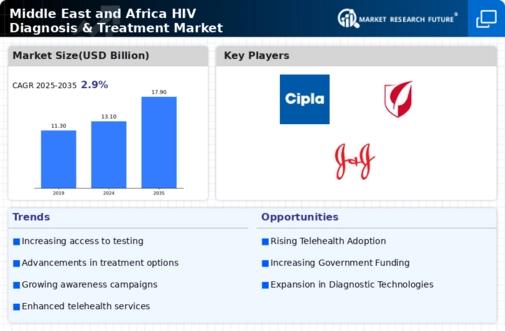Market Trends
Key Emerging Trends in the HIV Diagnosis Treatment Market
a) The market dynamics for HIV diagnosis and treatment have changed extensively over the years, reflecting technological advancements, increased awareness levels as well as global commitments to address the issue of HIV/AIDS pandemic. With that this is the trend in early disease recognition that has been observed due to better patient outcomes with early interventions. This tendency is vital especially among regions of high HIV prevalence where prompt diagnosis is key to effective management.
b) On top of this, there have been significant changes in the landscape of HIV treatment. Antiretroviral therapy (ART) still remains at the centre stage for managing HIV; thus new antiretroviral drugs with improved efficacy and tolerability profiles have been put on the market. Again, combination therapies are gaining popularity by being able to target different stages in HIV life cycle making it easier to treat resulting into reduced drug resistance and better treatment outcome.
c) There is also a shift towards personalized medicine in treating people living with HIV/AIDS within the market. Treatment regimens based on genetic composition of an individual’s genome and viral characteristics can be constructed through integration of these two concepts namely genetic testing and biomarker analysis. This results not only in optimized treatments but also limits adverse effects implying more customer-oriented healthcare system.
d) Access to diagnosing and treating HIV patients is a major part of current market trends. Diagnostic tests and medicines affordability has become one way organizations are trying to bridge such gaps as global health disparities. Innovative projects like generic drug production or international collaborations have gone a long way in bringing treatment closer to many including those who reside under limited resources settings.
e) Additionally, telemedicine and digital health technologies are having a huge impact on how we diagnose and treat persons suffering from HIV/AIDS today. Remote monitoring for ART patients, virtual consultation services among others all amounts to better adherence care thus reducing future complications related with non-adherence behaviours which were very prevalent before their arrival. Apart from increasing patient participation rate these technologies are useful in managing HIV especially in areas without enough healthcare infrastructure.
f) Another trend in HIV care is a more comprehensive approach that includes mental health, social support, and lifestyle factors. Given the link between mental and physical well-being, medical practitioners have integrated psychiatric services into HIV clinics for addressing psychosocial aspects tied to life with this disease. It is therefore important to adopt a holistic strategy for dealing with HIV carefully on all fronts.”






Leave a Comment